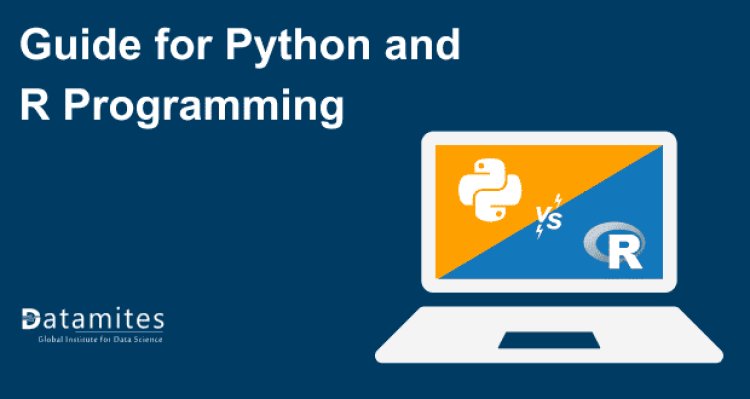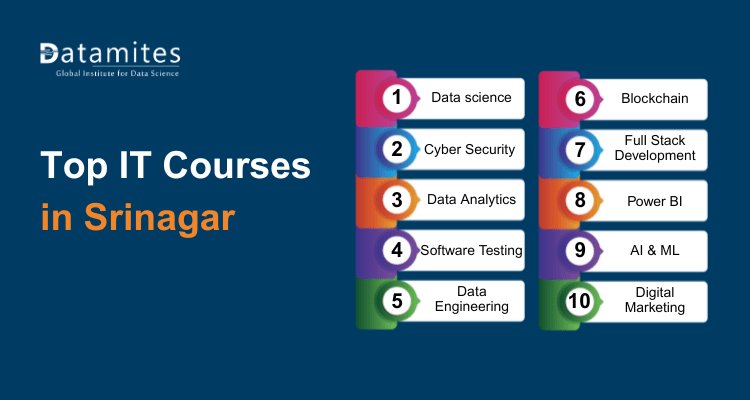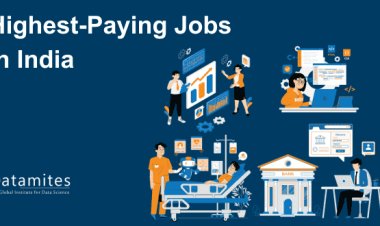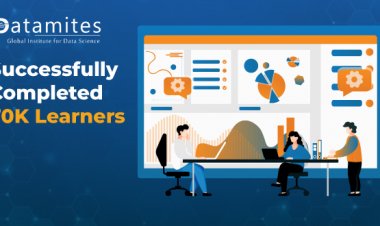Comprehensive Guide for Python and R Programming
This comprehensive guide covers essential concepts and techniques for both Python and R programming. It provides step-by-step instructions, examples, and tips to help you master these powerful languages.

In the realm of programming languages tailored for data science and statistical analysis, Python and R stand as giants, each with its unique strengths and applications. Choosing between Python and R often hinges on specific needs, preferences, and career aspirations. This blog explores the nuances of both languages, offering insights into their applications, libraries, pros and cons, and their respective impacts on job markets and career opportunities.
Python and R in today's data ecosystem
Python, known for its versatility and readability, has surged in popularity among data scientists and developers alike. According to recent surveys, Python has emerged as the dominant language in data science, with more than 70% of professionals adopting it as their primary tool. Its extensive libraries such as NumPy, pandas, and scikit-learn provide robust tools for data manipulation, visualization, and machine learning, making it indispensable in both research and industry.
Meanwhile, R, with its rich heritage in statistical computing and graphics, continues to be a cornerstone for statisticians and researchers. Renowned for its comprehensive packages like ggplot2, dplyr, and caret, R excels in exploratory data analysis and complex statistical modeling. Despite Python's rise, R remains a formidable force, particularly in academia and fields requiring rigorous statistical methods.
Python and R form a powerful duo in the world of data science, enabling analysts to derive insights from large datasets, develop predictive models, and effectively communicate their findings.
Read these articles:
- Guide to Python Programming Career
- Python Libraries For Data Science
- Python is Important for Data Science
Applications and Use Cases of Python and R Programming
Applications and Use Cases of Python Programming
Python's versatility goes well beyond statistical analysis, making it a popular choice in diverse fields including general-purpose programming, web development with frameworks like Django and Flask, and automation scripting. Its readability and ease of use contribute to its widespread adoption.
- General-purpose programming: Python excels in tasks beyond data analysis, such as web development, desktop applications, and automation scripts.
- Web development: Frameworks like Django and Flask empower developers to create scalable web applications efficiently.
- Data science and machine learning: Libraries such as NumPy, Pandas, and TensorFlow provide robust tools for data manipulation, analysis, and building machine learning models.
- Automation and scripting: Python's clear syntax and user-friendly design make it ideal for automating repetitive tasks and scripting.
Applications and Use Cases of R Programming
R shines in statistical computing and specialized domains, particularly in statistical analysis and research where it offers a wide range of packages for regression, hypothesis testing, and other statistical methods, making it a favorite among researchers and statisticians.
- Statistical analysis and research: R was designed with statistical analysis in mind, offering a vast array of packages for regression, hypothesis testing, and more.
- Data visualization: Packages like ggplot2 enable beautiful and intricate data visualizations, essential for exploratory data analysis and presentation.
- Bioinformatics: R's tools for handling and analyzing biological data make it indispensable in bioinformatics research.
- Academic and scientific research: Many researchers prefer R for its comprehensive statistical tools and ease of integrating analyses with academic papers.
Resources for Libraries and Tools in Python and R
Libraries and Tools in Python Programming
Python's ecosystem is renowned for its versatility and extensive range of libraries and development tools, making it a popular choice for data science, machine learning, web development, automation, and more.
Key Libraries
- NumPy: It offers robust support for extensive arrays and matrices across multiple dimensions, complemented by a comprehensive suite of mathematical functions tailored for these data structures. This framework serves as a cornerstone for numerous scientific computing libraries.
- Pandas: Offers data structures like DataFrame and Series, which are ideal for handling structured data. It provides functions for reading/writing data, filtering, aggregation, and merging.
- Scikit-learn: Comprises straightforward and effective tools for mining and analyzing data. It supports various supervised and unsupervised learning algorithms like regression, classification, clustering, and dimensionality reduction.
- TensorFlow: An open-source library developed by Google, it offers a flexible ecosystem for building and deploying machine learning models, especially deep neural networks.
Integrated development environments (IDEs) and tools: Jupyter Notebook for interactive data analysis, PyCharm for comprehensive development environment, and VS Code for lightweight editing with powerful extensions.
Libraries and Tools in R programming
R is particularly strong in statistical analysis and data visualization, supported by a rich collection of specialized packages and dedicated tools. R's strength lies in its specialized packages and dedicated tools:
Key Libraries
- Ggplot2: GGplot2 offers a robust and versatile framework for crafting intricate graphics using the grammar of graphics. It's highly customizable and supports a wide variety of plot types.
- Dplyr: Provides a set of functions designed to enable data manipulation with pipes. It's particularly effective for transforming data frames, filtering rows, selecting columns, and arranging data.
- Tidyr: Helps to create tidy data, where each column is a variable and each row is an observation. Functions like gather, spread, separate, and unite are used for reshaping and tidying datasets.
- Caret: A comprehensive framework encompassing numerous machine learning algorithms, offering functionalities for data partitioning, preprocessing, model refinement through resampling, estimation of variable importance, and visualization tools.
Integrated development environments (IDEs) and tools: RStudio for integrated development environment, Shiny for interactive web applications, and RMarkdown for dynamic document generation.

Read these articles:
Advantages and Disadvantages of Python and R
Python and R are both prominent programming languages extensively utilized in data science and statistical analysis. Each language has unique strengths and weaknesses, making them suitable for different applications. Familiarity with these attributes can assist professionals in selecting the appropriate tool for specific tasks within data-driven fields.
Python Programming Advantages:
- Python is versatile, suitable for diverse applications like web development, automation, machine learning, and AI.
- Python's syntax is readable and user-friendly, reducing errors and making it ideal for beginners.
- Python offers extensive libraries like NumPy, pandas, Matplotlib, and TensorFlow, enhancing development efficiency.
- Python has a large community that supports extensive open-source projects and quick problem-solving.
Python Programming Disadvantages:
- Python may exhibit slower performance compared to compiled languages because of its interpreted nature.
- Python's statistical performance can be slower than R for certain tasks.
- Python is less specialized than R in pure statistical analysis.
R Programming Advantages:
- R excels in statistical analysis with a comprehensive set of tools and techniques.
- R provides robust data visualization capabilities via libraries such as ggplot2.
- R has a robust ecosystem with thousands of specialized statistical packages.
- R benefits from a community of statisticians and data scientists contributing to its development.
R Programming Disadvantages:
- R has a steeper learning curve, especially for beginners without a statistics or programming background.
- R is less versatile outside statistical computing and data visualization.
- R can face performance issues with large datasets and has limited scalability for big data applications.
- R has a smaller community and fewer resources for non-statistical programming tasks compared to Python.
Comprehensive Overview of Python Developer Salaries Worldwide
Python has solidified its position as one of the most sought-after programming languages. Its versatility, ease of learning, and powerful libraries make it a favorite among developers and companies alike. As a result, the demand for Python developers has surged worldwide, resulting in competitive salaries.
USA: The average annual salary for Python developers is around $1,18,465. (Glassdoor)
India: Python developers earn an average annual salary of about INR 580,500. (Glassdoor)
South Africa: Python developers earn an average annual salary of approximately ZAR 633,337. (Indeed)
Singapore: The average annual salary for Python developers is about $105,298. (Indeed)
UK: Python developers earn an average annual salary of around £62,139. (Indeed)
Australia: The average annual salary for Python developers is approximately $131,021. (Indeed)
Exploring Data Science with Python and R
Python and R are two of the most popular programming languages used for data science and analysis. Each has its strengths and is favored for different aspects of the data science workflow:
Why Python for Data Science:
- General-Purpose Language: Python is a versatile language suitable for a wide range of tasks beyond data science, such as web development and automation.
- Rich Ecosystem: It features robust libraries such as Pandas for data manipulation, NumPy for numerical computations, and Matplotlib for visualization.
- Machine Learning: Python's libraries like scikit-learn, TensorFlow, and PyTorch are widely used for machine learning tasks, offering robust algorithms and frameworks.
- Ease of Learning: Python is renowned for its clear readability and straightforwardness, which makes it easy for beginners to grasp and adaptable for intricate projects.
- Integration: Python integrates smoothly with various languages and tools, making it easy to incorporate into production systems and workflows.
Why R for Data Science:
- Statistical Analysis: R was developed with statistical analysis in mind, making it particularly strong in this area with libraries like dplyr, ggplot2, and caret.
- Data Visualization: It excels in data visualization, offering powerful graphical capabilities that are highly customizable and publication-ready.
- Community and Packages: R benefits from a vibrant community focused on statistics and data analysis, with numerous specialized packages for specific analytical needs.
- Data Manipulation: R offers user-friendly syntax for manipulating and transforming data using tools such as dplyr and tidyr.
- Reproducibility: R's emphasis on scripts and markdown documents enhances reproducibility, crucial for research and academic settings.
In practice, many data scientists use both Python and R, leveraging each language's strengths depending on the task at hand, demonstrating their complementary roles in modern data science workflows.
Read these articles:
The choice between Python and R depends largely on your career goals, the specific tasks at hand, and your comfort with each language’s ecosystem. Python's adaptability positions it at the forefront in numerous data science scenarios, providing strong backing for tasks such as machine learning, web development, and automation. On the other hand, R’s specialized strengths in statistical analysis and data visualization make it indispensable in academic research and domains where precise statistical tools are paramount. Ultimately, mastering either language—or both—can significantly enhance your career prospects in the burgeoning field of data science.
DataMites Institute is a leading training provider in data science and analytics, offering comprehensive courses designed to empower professionals and students with cutting-edge skills. DataMites Institute provides extensive training programs in Python development, Python for Data Science, and Data Science using R. Aspiring professionals can enhance their skills in Python through specialized developer courses, delve into data analysis and visualization with Python for Data Science, and master statistical computing and predictive analytics with Data Science using R.
The DataMites Python course offers expert-level training in Python programming, equipping you with the skills needed for real-world software development and data analysis. The program covers essential Python concepts, practical projects, and real-world applications. With certifications from IABAC and NASSCOM FutureSkills, DataMites is a recognized leader in Python education. With over ten years of experience, the institute has successfully trained more than 100,000 learners globally.





